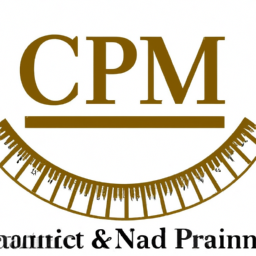Are you tired of feeling like a tightrope walker, constantly trying to balance the need for flexibility with the desire for control in your project scope management? Well, get ready to have your mind blown!
In this article, we will unveil some mind-blowing tips that will revolutionize the way you approach project scope management. Imagine a world where you have the power to define clear project objectives, conduct thorough stakeholder analysis, and develop a comprehensive project scope statement.
Picture yourself implementing effective change control processes and regularly monitoring and reviewing project scope. Sound too good to be true? Well, it’s not! With our strategic approach, you can achieve the perfect balance between flexibility and control.
But wait, there’s more! We will also reveal how fostering collaboration and communication can take your project scope management to new heights. So, get ready to take a leap of faith and join us on this journey to project scope management success. Get ready to become the master of your project destiny!
Key Takeaways
- Balancing flexibility and control is crucial in project scope management
- Clear project objectives are essential for successful project scope management
- Thorough stakeholder analysis is beneficial for effective project scope management
- Regularly monitoring and reviewing project scope is important for its successful management
Define Clear Project Objectives
To ensure success, make sure you define clear project objectives right from the start. Clear objectives are essential for guiding your project and keeping it on track.
By clearly defining what you aim to achieve, you provide a roadmap that allows you to measure progress and make informed decisions throughout the project lifecycle. Start by identifying the specific goals you want to accomplish and ensure they’re measurable, attainable, relevant, and time-bound.
Document these objectives in a clear and concise manner, so everyone involved understands what needs to be achieved. Clear objectives also help you manage expectations and ensure alignment with stakeholders.
By setting clear project objectives, you lay the foundation for success and create a common understanding of what needs to be accomplished. With a solid set of objectives in place, you can now conduct thorough stakeholder analysis and identify key stakeholders and their expectations.
Conduct Thorough Stakeholder Analysis
Ensure you thoroughly analyze all stakeholders involved in your project, as they hold the keys to unlock the treasure trove of insights and perspectives necessary for success. Effective stakeholder engagement is crucial for project scope management. To engage stakeholders effectively, follow these steps:
-
Identify key stakeholders: Make a list of individuals and groups who have a vested interest in the project. This includes internal and external stakeholders such as team members, clients, customers, and suppliers.
-
Assess stakeholder interests and expectations: Understand what each stakeholder wants to achieve from the project and what their expectations are. This will help you align their interests with the project objectives.
-
Determine stakeholder influence and power: Analyze the level of influence and power each stakeholder has over the project. This will help you prioritize their needs and manage potential conflicts.
-
Develop a stakeholder engagement plan: Create a plan to actively involve stakeholders throughout the project lifecycle. This could include regular meetings, communication channels, and feedback mechanisms.
By conducting a thorough stakeholder analysis, you will be able to effectively engage stakeholders and gain valuable insights to develop a comprehensive project scope statement.
Develop a Comprehensive Project Scope Statement
Create a detailed and clear project scope statement that outlines the objectives, deliverables, and boundaries of the project, ensuring everyone involved understands the full scope of the work.
This document serves as a foundation for the project and helps establish a common understanding among stakeholders.
When developing the scope statement, it’s important to prioritize scope elements. Identify the key objectives and deliverables that are critical to the success of the project. This will help in allocating resources and managing expectations.
Additionally, techniques for managing scope creep should be implemented. Regularly review and evaluate changes to the scope, ensuring that they align with the project’s goals and objectives. By effectively managing scope, you can minimize the risk of scope creep and ensure the project stays on track.
To implement effective change control processes, establish clear communication channels and documentation procedures to track and manage scope changes.
Implement Effective Change Control Processes
Implementing effective change control processes is crucial for maintaining project alignment and preventing scope creep. Change control processes provide a structured approach to evaluating and approving requests for changes to the project scope. By implementing these processes, you can ensure that any changes to the project are thoroughly evaluated for their impact on the scope, schedule, and budget. This helps to prevent unnecessary changes that could lead to scope creep and project delays.
To effectively implement change control processes, it is important to establish a clear set of guidelines and procedures for submitting and evaluating change requests. This includes defining the roles and responsibilities of the change control board, which is responsible for reviewing and approving or rejecting change requests.
By following these change control processes, you can maintain control over the project scope while also allowing for flexibility when necessary. Regularly monitoring and reviewing project scope is essential to ensure that any changes are aligned with the project goals and objectives.
Regularly Monitor and Review Project Scope
Regularly monitoring and reviewing the project’s scope helps to validate the accuracy of a theory and captivate the audience’s attention. It ensures that the project stays on track and aligns with the desired outcome.
By monitoring progress, you can identify any deviations from the original plan and take corrective actions promptly. This allows you to address any potential risks or issues before they escalate, minimizing the impact on the project’s success.
Additionally, regular monitoring and review provide an opportunity to assess the project’s performance and make necessary adjustments to optimize efficiency and effectiveness.
To emphasize the importance of monitoring and reviewing project scope, consider the following points:
- Ensures project alignment with goals and objectives
- Identifies potential scope creep
- Allows for timely adjustments and course corrections
- Enhances risk management efforts
- Facilitates effective decision-making
By regularly monitoring and reviewing project scope, you foster collaboration and communication, ensuring that all stakeholders are aligned and engaged in the project’s success.
Foster Collaboration and Communication
To foster collaboration and communication, you’ll need to establish a strong sense of unity and open lines of communication among team members. Improving team dynamics is crucial for project success.
Encourage team members to work together, share ideas, and support each other’s efforts. Create a positive and inclusive work environment where everyone feels valued and motivated to contribute.
Regular team meetings and brainstorming sessions can help enhance project transparency. Encourage team members to openly discuss project scope, goals, and any challenges they may be facing. This will ensure that everyone is on the same page and working towards a common objective.
Additionally, provide regular updates on project progress and milestones. This will keep everyone informed and engaged, fostering collaboration and communication throughout the project.
Frequently Asked Questions
How can a project manager effectively handle scope creep and prevent it from impacting the project objectives?
To effectively handle scope creep and prevent it from impacting project objectives, you must master the art of scope creep prevention and impact mitigation.
Stay vigilant and proactive, continuously monitoring project boundaries and setting clear expectations.
Communicate openly with stakeholders, ensuring everyone understands the project’s scope and objectives.
Regularly evaluate and prioritize changes, carefully considering their impact on resources, schedule, and quality.
By staying organized, detail-oriented, and strategic, you can navigate scope creep successfully and keep your project on track.
What are some common challenges in conducting a stakeholder analysis and how can they be overcome?
To overcome challenges in conducting a stakeholder analysis, you can employ various stakeholder engagement techniques.
Start by identifying all relevant stakeholders and their potential impact on the project. Then, prioritize them based on their power and interest.
Communicate regularly with stakeholders to understand their expectations and concerns. Use techniques like surveys, interviews, and workshops to gather their input.
Finally, develop a stakeholder engagement plan to ensure their involvement throughout the project lifecycle.
How should a project manager prioritize and manage changes to the project scope during the execution phase?
To prioritize changes and manage scope creep during the execution phase, start by identifying the impact of each change on project objectives. Consider the potential risks and benefits, and assess if the change aligns with project priorities.
Then, communicate with stakeholders to gain their input and support. Implement a change control process to document and evaluate all proposed changes.
By being organized, detail-oriented, and strategic, you can effectively handle changes while maintaining project control.
What are some key performance indicators or metrics that can be used to monitor and evaluate the project scope?
To monitor and evaluate the project scope, you can use project scope metrics and project scope evaluation.
Project scope metrics can include indicators such as adherence to project deliverables, scope changes, and scope creep. These metrics help measure the project’s progress and ensure that it stays within the defined scope.
Project scope evaluation involves assessing the project’s scope against the initial objectives and determining if any adjustments are needed. This evaluation ensures that the project remains on track and aligned with its goals.
How can collaboration and communication be fostered among project team members to ensure a shared understanding of the project scope?
To foster collaboration and ensure a shared understanding of the project scope, take a collaborative approach and prioritize effective communication.
Encourage open dialogue and active participation among team members to gather different perspectives and ideas.
Utilize communication tools and platforms to facilitate real-time updates, document sharing, and discussions.
Regularly schedule meetings and check-ins to address any scope-related issues or concerns.
By fostering a collaborative and communicative environment, you can ensure that everyone is on the same page and working towards the project’s goals.
Conclusion
Congratulations on completing the article on project scope management! By following these tips, you’ll be able to strike a perfect balance between flexibility and control in your projects.
Remember, it’s essential to define clear objectives. Conduct thorough stakeholder analysis and develop a comprehensive project scope statement.
Additionally, implementing effective change control processes and regularly monitoring and reviewing project scope will ensure success.
Lastly, fostering collaboration and communication will strengthen your project team and lead to better outcomes.
Keep up the great work!























